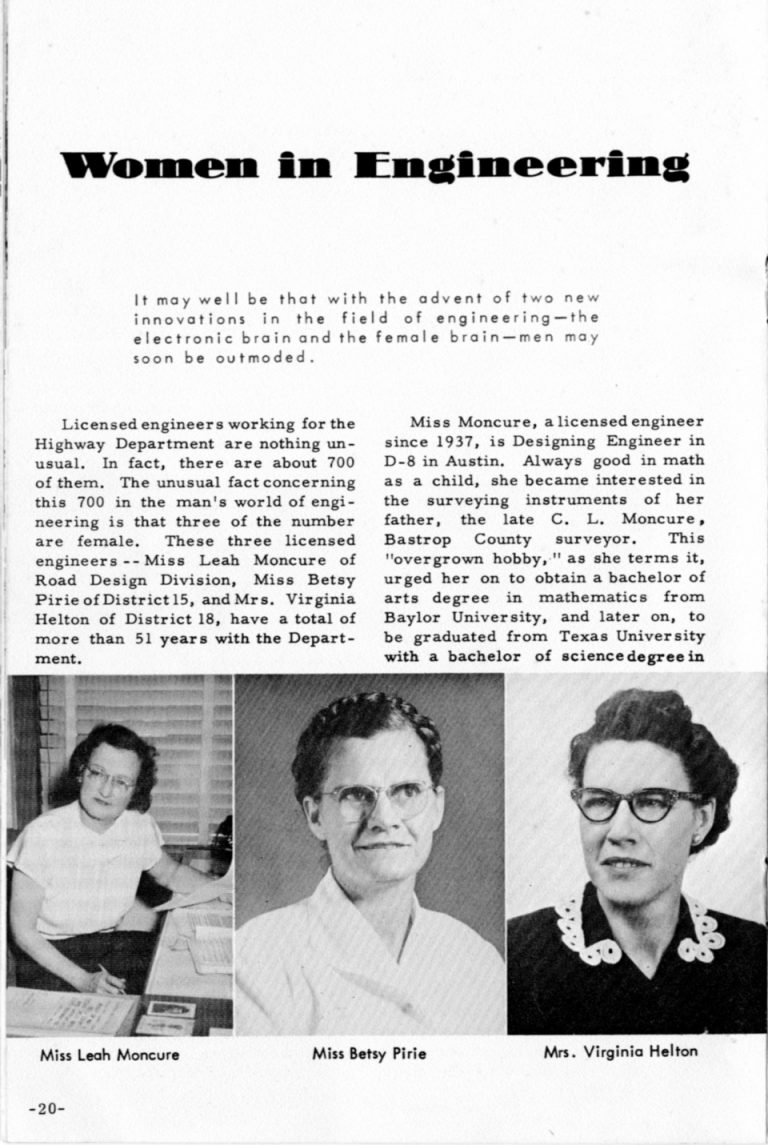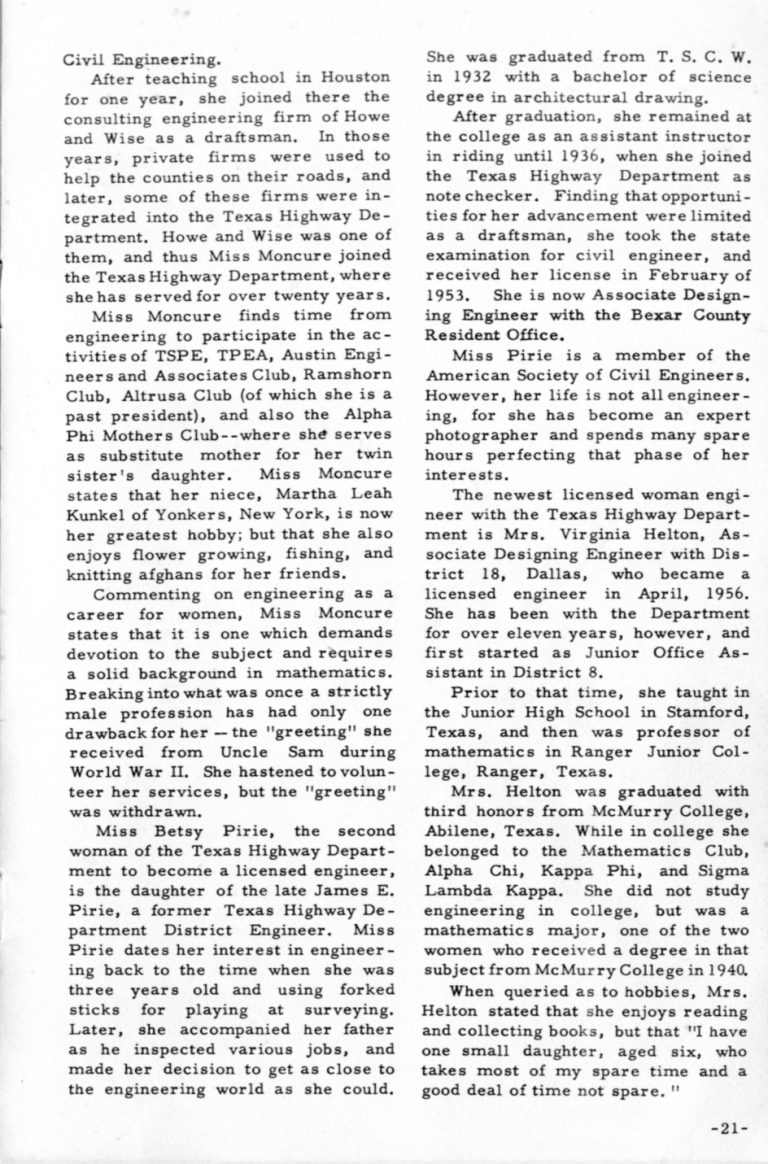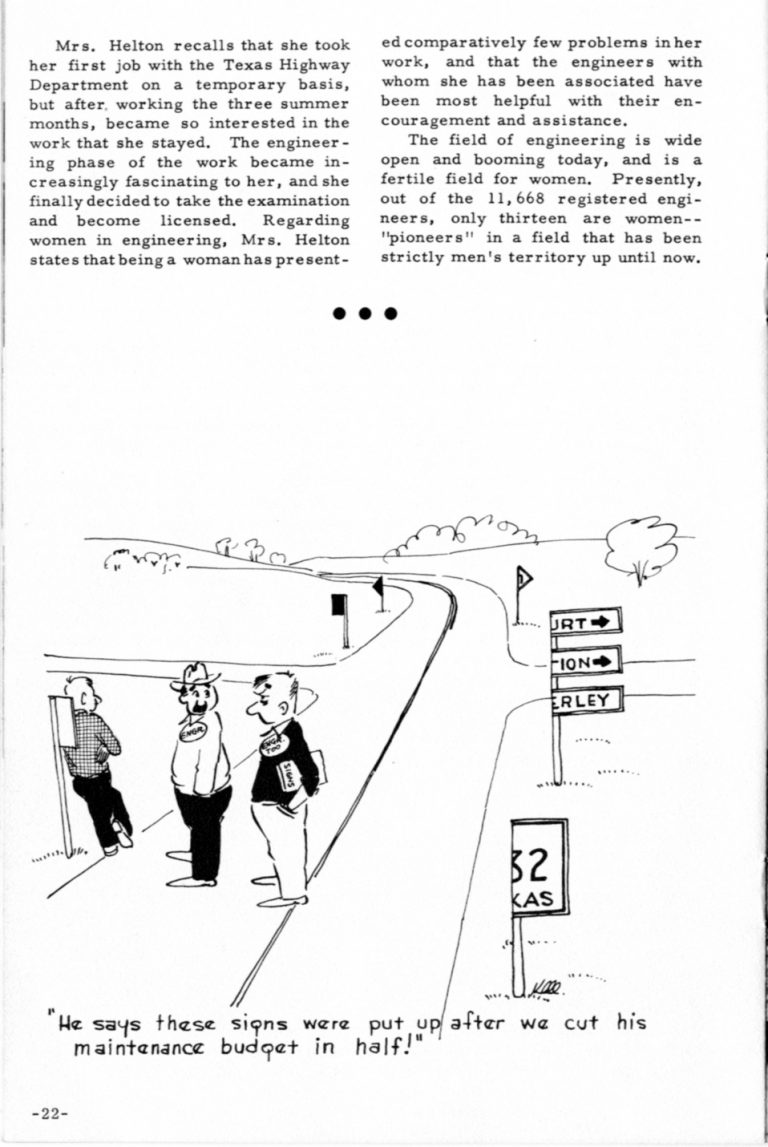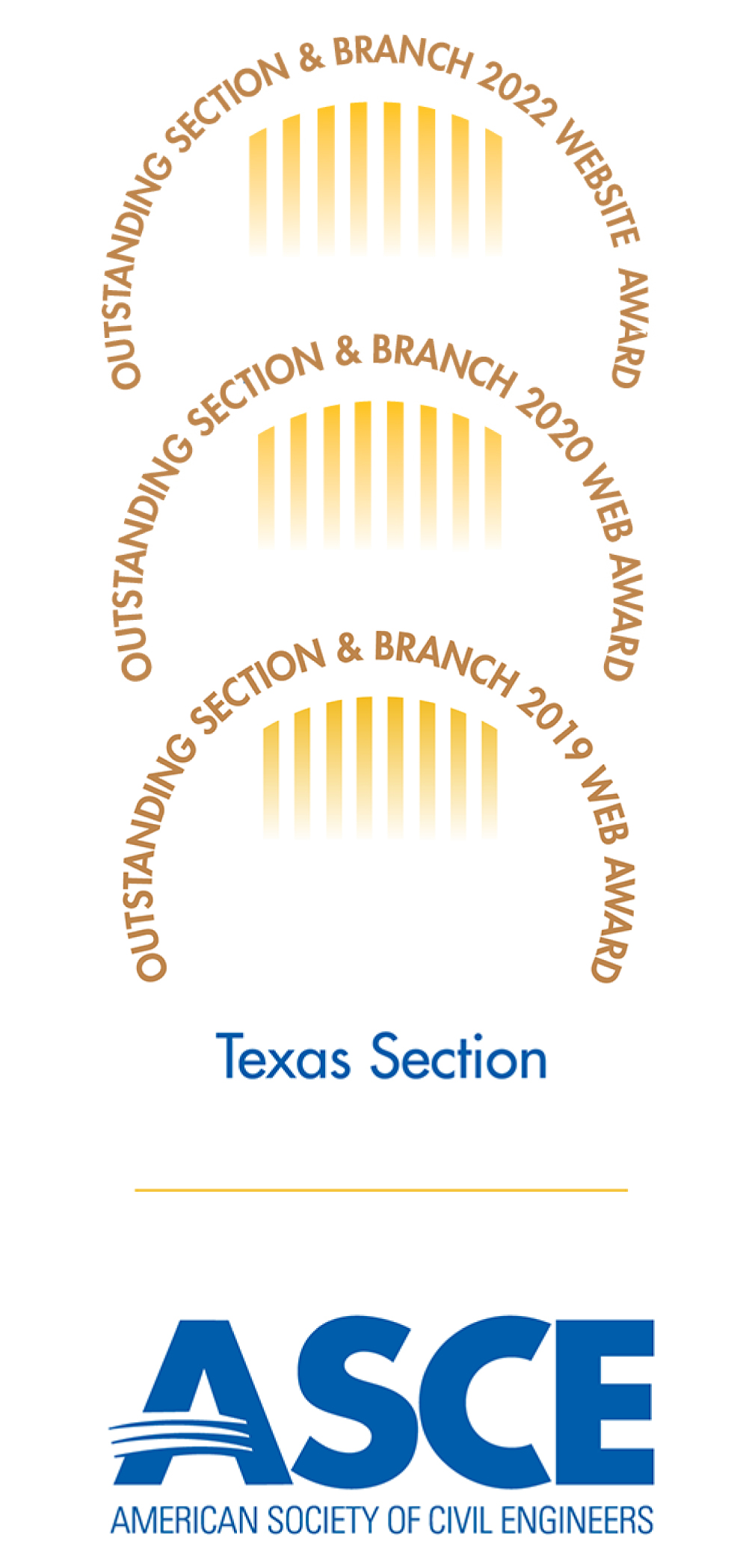Share this story:
Most articles about Leah Moncure focus on that she was the first women engineer to receive her professional engineer’s license, but not many details of what she did as an engineer and her contributions to the community. There are a series of articles in the newspapers that focus on her as a role model and mention more details about her experience. Here we offer a bit of background into her life and motivation, as well her career.
Leah Moncure was born June 7, 1904 to Cassius Lee Moncure and Hattie Nuckols. She had a twin sister, Grace. As a child, Leah accompanied her father as he surveyed the sites and made maps. She gives an account of how excited she was to learn from him. After graduating high school, her and Grace attended Baylor University. To get a degree as close to engineering as possible, Leah majored in math, graduating in 1926. She got a job teaching math in Houston but after a year, she resolved to get into engineering. She applied for a job with Howe & Wise, an engineering firm in Houston who offered her a 3-year contract in building county roads. Under the mentorship of the firm’s partner, A. J. Wise, she got some experience doing drafting and eventually helping Wise to design. He encouraged her to go back to school to see if she would get an engineering degree.

In 1931, there are newspaper articles where Dean T. U. Taylor (The University of Texas) talks about accepting her to a civil engineering program. She ran for office in the school’s civil engineering club and served as secretary treasurer. In 1937, she was awarded a civil engineering degree and started work with the Texas Highway Department.
Leah became Professional Engineer 2250, the first female and only female until the 1950s to earn this licensure. Upon starting work with the Texas Highway Department, she worked on Harris County plans for Highway 38, now SH 6. In an article from 1938 about working in a male dominated profession, she was quoted as saying she did not expect to work out in the field in charge of construction. Throughout her career, she would work in Lufkin and the Beaumont area, then on to Austin to work in the Right of Way & Design Division and research that included intersection channelization, expansion joins, and embankment settlements.
Outside her career, she participated in several organizations including ASCE, NSPE, and the Altrusa Club. She was also president of the Austin Area Altrusa Club in 1950, which raised scholarship funds, helped the Red Cross in time of need, gave war-time support, gave assistance for orphans, and even adopt a highway support. Growing up, Leah’s family had always helped their community and she was not any different.

Aside from being the first female professional engineer in Texas, Leah Moncure was also the first female NSPE life member, and the first female engineers to work for Texas Department of Highways. She shared her experiences with the public through a series of articles with the Austin Stateman and others, in hopes other women will consider civil engineering as career.
Despite being born with a heart condition, Leah managed to work with her condition until 1964 when she retired from the Texas Highway Department. She died almost 8 years later, on January 17, 1972. In 1980, The University of Texas founded the Leah Moncure Memorial Scholarship to honor her accomplishments.
Additional Photos:
>> “First Woman Engineer Retires“
>> Leah Moncure, Title Engineer, D-15, Camp Hubbard
Source: Miles and Miles of Texas; p. 267.
Texas Highways September 1956 article on Women in Engineering:
Related links:
TN Magazine; May-June 2016; Page 14; https://texashistory.unt.edu/ark:/67531/metapth839293/m2/1/high_res_d/unt_2016_0012_0055.pdf
Preservation Texas, News Articles; 2021 February 4; https://www.preservationtexas.org/thc-approves-undertold-markers/
Texas Archival Resources Online; Austin History Center, TSPE Auxiliary Records; https://legacy.lib.utexas.edu/taro/aushc/00166/ahc-00166.html
Share this story:











